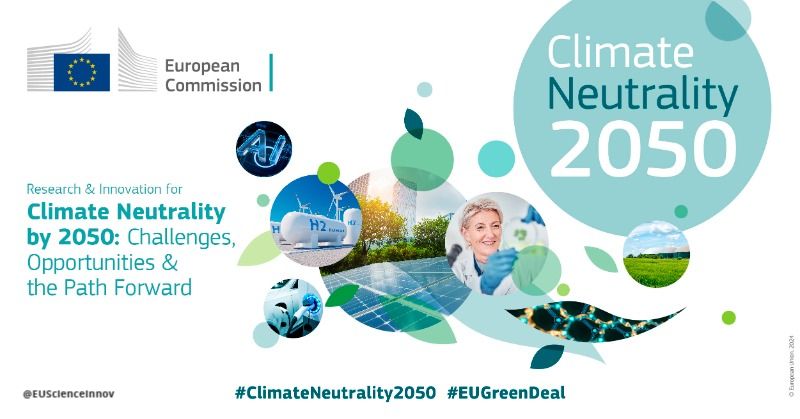
On 4 March 2024, the European Commission’s DG for Research and Innovation (DG RTD) unveiled a new report titled “Research and Innovation for Climate Neutrality by 2050: Challenges, opportunities and the path forward”. The main finding of the report is that the current level of innovation in the EU is insufficient to reach net-zero carbon emissions by 2050, and it provides policy solutions to accelerate innovation, with a particular focus on high-risk areas not yet close to market but necessary to achieve the clean energy transition.
The study, listing more than 150 R&I areas across 17 main categories with the potential to contribute to climate mitigation - from solar PV to green steel and digitalisation, amongst others - points out that substantial investments will be needed for innovative technologies to reach the stages of commercialisation and adoption in the next twenty years. Combining a literature review, climate neutrality scenarios analysis, case studies, workshops, and stakeholder engagement, it adopts a systemic approach, rather than a technological one. Through this systemic and multi-dimensional lens, the publication also takes into consideration socio-economic and regulatory variables.
First, it identifies several levers to create “tipping points”, critical moments to generate high impact and scale up innovations with limited investments, such as competitiveness, attractiveness, accessibility, desirability, complementarity, and availability of information. It also attributes a score to each identified area, depending on the commercialisation challenges it may face, its climate mitigation potential, its environmental impact, its socio-economic impact, and the current level of funding it benefits from.
The report argues that meeting the needs to achieve climate neutrality requires action on three nexuses: mobility, built environment, and energy; circularity, industry, and carbon removals and capture; and agrifood and carbon removals. Within the first nexus, end-of-life treatment, recycling, and the production of alternative building materials ranked first, with limiting transport demand, and increasing supply and demand-side flexibility coming next, according to the criteria detailed above. However, energy storage notably does not score high, mainly because of dependencies on critical raw materials, and significant pre-existing funding.
Within the second nexus, circular economy solutions such as enabling repairs and increasing durability tend to score high, while synergies can be observed between the decarbonisation of heavy industries and carbon removals and capture. Indeed, Direct Air Capture technologies and design, manufacturing, and supply-chains improvements score high, and are identified as key solutions to make industries more sustainable. When it comes to carbon removals, soil carbon sequestration and marine carbon dioxide removal are highlighted as solutions benefitting from solid rankings.
Intending to go beyond a ranking of technologies, the publication aims to support informed decision-making and focuses on challenges, dependencies, and limiting factors. It points out the rapid evolution and dynamism of climate mitigation research and innovation, which can render foreseeing which technologies are most effective quite difficult. Siloed mindsets, inadequate evaluation tools, risk aversion, and lack of adaptability and expertise are also cited as hurdles and limiting factors in the design of R&I programmes and agendas.
Overall, the report highlights the importance of steady, incremental progress in accelerating high-impact R&I solutions and identifies new materials, AI, and nanotechnologies as key general-purpose technologies to further enhance innovative climate-neutral solutions. Furthermore, to accelerate high-risk high-impact innovation, it recommends providing more directionality to the EU missions, systematically considering societal and social aspects, creating synergies between instruments and actors, adopting comprehensive evaluation frameworks and a systemic approach, as well as developing pilot projects and regulatory sandboxes. Lastly, it recommends the EU strengthen international cooperation on climate neutrality R&I.